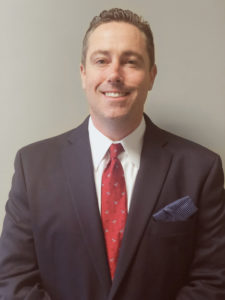
Freedom comes from making a healthy profit. Thus, on this episode, host Nathan Shields and guest Frank Cawley, PT discuss what it takes to establish a solid financial structure and improve profits in business. They tackle the important KPIs you need to track, the financial team you should have in place, the pros/cons of owning your office space, and the reports you need to review regularly. We’re all in the PT ownership business in order to do things the way we want to do them and to make as much money as we want to make without depending on others. If we lose sight of our financials, then we’re bound to lose our business altogether (or endure a lot of stress in the meantime). Take the time to monitor your finances regularly and your business will reward you with more money and freedom.
—
Listen to the podcast here:
Financial Fundamentals: How To Achieve Your Financial Goals With Frank Cawley, PT
I’m talking about one of my favorite subjects and that is anything to do with money. I’ve got Frank Cawley, a physical therapist out of Pennsylvania on with me. We’d taken the opportunity to break down some basic financial fundamentals in regards to your physical therapy practice. If you feel like you’ve got a handle on things, maybe this is a good episode to compare what you’re doing with Frank’s recommendations as well as my experience. If you’re new or feeling green in regards to your financials, maybe this is a good episode for you to take notes because we talk about KPIs, Key Performance Indicators and the statistics that you need to follow in your practice. We talked about the importance of renting versus owning the space that you’re in. Also, the importance of developing your financial team as it were.
We go into a number of different things and it’s great to talk about it. You might be able to tell that I get a little bit excited in this episode because I love talking about numbers. That’s who I am. Vitally important, we have to make a profit in order to sustain ourselves in what we’re trying to develop and obtain the dreams that we have either for our clinics, for our families or our individual selves. It all comes down to making a profit. Although we like to think we’re a little bit more altruistic, we got to make money.
—
I’ve got Frank Cawley, the CEO of Cawley Physical Therapy and Rehabilitation out of Northeast Pennsylvania. He’s successful. He’s got six locations going. He’s also the Cofounder of Next Level PT and Director of their AR and real estate acquisitions. I’m excited to bring him on because we’re going to talk about money. Frank, thank you for coming on.
Nathan, thank you for having me. I’m excited to be here. It’s a big honor.
Thank you for taking the time. If you don’t mind sharing with the audience, what got you to six locations and where you’re at? You’ve had a long history. If you don’t mind sharing a professional snapshot of what got you to where you are at?
My wife and I started the PT business. She is not a physical therapist, but she was helping out with the business side of things. It was her and I. I graduated from Hahnemann University in 1999 and want to take on the world, treat everybody and get everybody better. I thought that’s what was going to happen. I got out into the field and started treating people and enjoyed it. I started to understand a little bit more of the business aspect of things. Quite frankly, I never thought this was something that I’d be even possibly talking about, but my wife somehow someway convinced me, “You could do it yourself. I think that you’d be great at it.” Lo and behold, as with most things, she was correct. We opened our first clinic in April of 2003 with the grand total of zero patients on the schedule for the first week. Thankfully through perseverance, hard work and support from my wife, family, friends and our communities, we started to evolve. We started with one clinic at that time and opened our last clinic in April of 2019.
We’re very excited about that. That was our sixth clinic. We’re seeing upwards of about 650 patients a week which we’re very happy about. We’d like to say 650 satisfied and successful clients. We continue to look for ways to evolve and grow. We have a ten-year vision and mission of twenty clinics with hopeful of 2,000 patient visits per week and roughly 130 to 150 new patients per week, which is pretty amazing because we sit around a number of 130 to 150 new patients a month. Thinking of those numbers seems so unfathomable, but with time and with growth. I love to know what things would be looking like in ten years from now when I’m able to have a conversation with myself and see where we’re at. We’re anxious, excited and hopeful that we can meet those expectations.
I’m sure you will, just the fact that you have those goals, you’ve put that out there in the universe. I’m sure you’re heading in the right direction because you’ve worked yourself to a point, I’m assuming where you’re the leader of that ship. You’re looking ahead at that goal and people have followed in line with you and you’ve got the right people in place to do that. You’ve established a great foundation if you have six clinics.
I would be the first guy to say this. Back in the day when it was my wife, I and somebody helping us getting started, a PT technician or a PT aid, my goal was to see as many patients as I possibly can and attend to twelve-hour span on a daily basis. I thought that meetings were foolish. I thought it was a waste of time and that there was nothing productive that came out of meetings because you’re not seeing patients and not being profitable. Little did I know that fast forward to the present day, I do more meetings. Each of those meetings has such significance and consequence to make sure that you have proper systems in place, proper structure. The best and most appropriate people for each position doing what they do in what they’re good at and ways to oversee those and have the proper metrics to track those things. Most importantly, I believe we’re developing a brand and a culture with what we’re doing, which is what excites me and makes me love getting up every day and come to work.
That gets exciting when you get to that point. I’m sure you’ve recognized that you are the leader, you are the CEO, you have the vision and you’re also the executive in terms of managing metrics and establishing systems and policies. In those meetings that you’re having with people, you’re also a coach. You’re there to essentially serve your team members and you’re coaching them and training them on what you’ve learned along the way.
I like to believe that I’m coaching them, but I learned a long time ago from somebody much smarter than me is that you don’t have to be the smartest person in the room. If you surround yourself with smart people, that is definitely going to carry a lot of weight and carry over. I believe in many instances, I have a lot of the answers that people are looking for or that we are looking for. I’ve also learned that now going from two people in a business, being my wife and I to 25 plus, that the most important thing you can have is a voice from every one of your team members and let them know that their voice is heard. It’s important that everything that they have to say could mean the difference between making a positive versus a catastrophic decision and I think that it’s of critical significance. I learned a long time ago that twenty heads are better than one for sure.
It’s so nice when you have a team that has strengths that complement to you. People can do things better than you do and sometimes they’ve got more energy than you do towards certain goals. It’s nice when you can have that complement of teammates.
I’m a big fan of the SWOT analysis. When you find someone’s strengths, we all want to feed off that strength and enhance our weaknesses with someone else’s strengths. When we’re strong, share that opportunity for them to improve and for them to strengthen whatever weak points they have as well.
You are the AR guy, the real estate acquisitions guy of Next Level Physical Therapy and you wouldn’t get to the point of six locations and managing that well if you didn’t have a solid foundation of financial understanding. That’s what we want to get into a little bit more and your thoughts on how to establish and achieve the financial goals that you have as a PT owner. We have these altruistic ideas that we want to become the premier physical therapy clinics in our location. We want to serve the community, but that doesn’t happen unless we are able to profit, if we’re not able to be sustainable financially. Talk to me a little bit about your thoughts regarding that, how to establish and achieve financial goals.

You hit one of the keywords, Nathan, right off the bat is profit. In Next Level PT, when we are talking with other owners or private practice owners, many times people will be saying, “I made $1 million. I made $2 million. I made $500,000 but I still don’t have a lot of money. I don’t know where it all goes.” How many times have you heard that? I’m making a lot of money but I’m spending a lot of money. We all know that it outlines everything. Profit is the key term the way I look at it. In particular net profit, but profitability and a percentage of profitability that you have in your clinic is what is the key. You can make $1 million in a year, but if you spend $900,000, you’re 10% profitable. However, if you can make $1 million and you made $200,000, you’re a 20% profitable company. That obviously not only helps you, it helps your staff with those people that you might be relying on bonuses and extra payments.
It helps you with expansion purposes and grow that helps you buy equipment that might be necessary. For a guy like me who loves real estate as a passion and as a secondary thing to what I do with my physical therapy. Physical therapy has afforded me the opportunity to also get significantly involved in real estate acquisitions, both from a commercial and a residential standpoint. As a secondary means of not only income but as investments and building equity. For me, it’s like a future retirement thing.
To go back a little bit, we talked about profits. What are you saying based on your experience or maybe what do you hear within the PT industry that is either a minimum level of net profit that we should expect out of our PT clinics or maybe if you have an idea of the industry average, what do you know about that?
From research and from talking with a lot of the other cofounders with Next Level PT and interviewing a lot of physical therapy practices and about their profits. It seems like the numbers are magic numbers that you’re hearing is that, “If you could be 10% to 15% profitable, you’re doing okay. You’re doing pretty well.” You could be 15%, 20% profitable. You’re probably in the top 20% to 10%. If you could be in above 20%, 25% or more in terms of profitability, you’re probably in the 3% to 1% for profitability in terms of overall looking at physical therapy as a whole.
I think we’re on the same page because I’m assuming that the average net profits are somewhere around the 15% range, maybe a little bit less. If you’re doing anything less than 10% net profits, that’s tough to justify being an owner of a company that has less than 10% net profit margin. Those guys that are doing over 20% are killing it. A lot of that can depend on location and the reimbursement rates that you’re getting in your clinics. That sounds about right.
Nathan, you hit some key components in there as well. A lot of that can be contingent upon the certain metrics that you look at, whether it’s reimbursement, whether it’s the caseload that you carry. There might be somebody with 50% Medicare versus somebody who has 50% worker’s compensation. Where we’re at, the worker’s compensation is a much higher payer for what we see comparatively speaking to some other insurances. We’ll have the insurance companies that might reimburse you only at $60 a pop or $55 a pop, but then you have some of the higher reimbursing ones depending on your charges, which is a hugely key component that we educate our staff on and talk about regularly is proper billing and charging. I don’t know how you feel about this, Nathan, but notoriously as physical therapists, we undercharge and underbid, “We’re afraid to charge that.” Why? You did the service. What are you afraid of? You documented, you have proof, there’s nothing to argue about there. Those things and having those metrics in place can set the foundation and tracking those metrics to make sure that you’re being as profitable and maximizing your revenues as best as you possibly can. It’s a key.
I want to get to those exact metrics that you recommend that people follow. PTs in general, I like to call us compassionate billers. There’s so much fear in our industry already. We fear that we’re going to overbill or we want to be generous or we think somehow we will be looked upon more favorably if we don’t charge everything that we did. I don’t understand it. If it’s unethical to overbill, I think it’s also unethical to under bill because we should be getting paid for what we provided. It’s up to us to document and justify it. You know it and I rail on it a lot. Nonetheless, what are some of those key financial metrics that you might recommend every PT on or be following?
Make sure you have proper systems in place and the most appropriate people for each position doing what they do and what they're good at. Click To TweetThere’s a couple of that. For each person, it might be a little different. For me and for a lot of the founders in Next Level, we clearly look at patient visits as a big one. You could look at that, but if you’re getting $60 a patient visit versus the $80 a patient visit, there’s a huge difference. The next thing is charges per visit is what we touched upon. How much are you charging per visit? More importantly, based on those charges that you’re doing per visit, how many of them through the EMR that we like to utilize? There’s a direct versus indirect units. Being direct is getting better reimbursement. That might be your therapeutic exercise, your neuro reeducation, your therapeutic activity and your manual codes. It’s much more handsomely than an ultrasound or a cold pack. That’s a key component that you want to look for. In addition to that, we look at our initial evals. Is that an important one to track? How many units are being charged on an initial eval? Nathan, why do you think that’s super important?
Because you can charge on top of that initial eval and you should be if you’re doing any work outside of the assessment itself.
You’re absolutely right. What does the eval do for every visit they’re to follow? It sets the foundation. If somebody is coming in, why do 90% of people come to physical therapy or more?
They’re in pain.
If you’re coming in and I’m having this range of motion, this manual muscle test and these special tests and you’re like, “You’re hurting me,” and then I do nothing and you leave after that, there’s a great likelihood that person might not come back. They’ll think we’re masochists and we’re not really there to help them. It’s critically important to get the proper treatment and charge capture on that first visit to set the tone in the foundation for what people are doing there. That’s a key component. Schedule efficiency and clinical efficiency. These are a couple of other ones that you want to definitely look at. You should know in your practice how many times per week your patients are being scheduled. We like to look at a 2.3 average across the board. That means if you have 100 patients on a plan of care, you should be at about 230 visits for the week at 2.3. Sometimes people look at these numbers and all of a sudden they’re like, “I only have 165 visits scheduled.” That means your schedule efficiency is at 1.65. “No, we know our patients two to three times a week.” I understand what you’re telling your patients, but your front desk or someone else is not doing that or the patients are not adhering to that.
That’s a big issue because right there, I made some adjustments to how I was billing. We discussed about how we under bill a lot of times. Also, I’m sure you’re familiar with redundant coding. If you charge a Medicare patient, for example, three therapeutics exercises over 45 minutes span, the second and third units are going to be reduced in terms of the amount of reimbursement compared to the first. If those units could be more wisely utilized or built accordingly for a therapeutic activity or a neuro reeducation task, you are automatically generating $4 to $5 to $10 to $15 more on that session for those little tweaks and changes, which I think is immensely important.
It’s huge if you consider maybe if an average reimbursement per visit was $100. For some people, that’s pie in the sky. If the average reimbursement was $100 and you were able to increase your per visit charge by $10, it’s $10, but then at the end of the year, that’s a 10% increase.

To the readers, I would assume that anyone of us would take a 10% raise as quickly as possible. I think that’s tremendously important.
To comment on some of your other key performance indicators that you’re addressing, knowing that reimbursement per visit is huge simply because some of those contracts are $50 per visit, $60 per visit especially as these third party administrators come on board. We need to know exactly where we are at on the reimbursement per visit side so that we can appropriately say yes and no to some of these contracts. It’s in our nature to simply take all comers but we don’t necessarily look at how that affects us financially.
I couldn’t agree more. We typically do not participate with tertiary insurance parties. We have had numerous ones in our area giving examples. For workers’ compensation, there are several that will pay $90 to $100 on the eval and some will pay $70 and some will pay $85 on the subsequent visits. For some people reading this, they might be like, “That’s great.” They might only make, and I say only because that’s maybe designated for their area, $65 to $70 a visit. They might say, “That’s crazy not to take that.” When you consider not doing that and they can still be referred to you, we can easily make on some of those insurance carriers $125 to $150. That’s night and day differences in terms of that reimbursement. That’s a huge key component. Knowing another metric is knowing your percentage of patient caseload. For people out there who may take a medical assistant space plans, maybe traditional Blue Cross versus Medicare versus workers’ comp and automobile insurance. If you ever practice that 70% of workers’ comp like in my case versus a practice, same case that’s 70% medical assistance, you’re talking $65 a visit versus possibly $130. You doubled your reimbursement times 70%. I’m sure you can see the difference that can tremendously make.
Knowing that payer mix can be huge because number one, knowing what it is and then number two, knowing if that’s what you actually want to see can really affect at that point of marketing strategies. We need to steer away from some of the more medical assisted plans, whether that’s Medicare and the workers’ compensation field more. You can start establishing some goals and some metrics to see that payer mix change and get some of those higher payers coming into your clinic.
One of my colleagues, we often say when we have discussions is no metrics, no conversation. If you can give me the metrics on what your patient population is or you give me the old, “It might be about 30% to 55% Blue Cross. My units per visitor are between 3.7 and 4.6.” I could say 4.5 to 4.6, but anything more than that, we really need to get down and dirty knowing the metrics, knowing your numbers. Statistically, you could make a proper educated decision financially on what’s in your best interest on the decisions to make. Let’s face it, this is how people can expand clinics, how they can grow things. For people like myself who have six clinics, it’s important to diversify how each clinic separately is doing. The Next Level PT, we do a clinical analysis form for each of the clinics to see how profitable they’re being, what type of volume they’re seeing, when is it ready for growth? When do we need to let somebody go? You can tell when a clinic is growing or static, you can tell when it’s hemorrhaging and knowing those numbers is of immense importance.
You have a separate QuickBooks account for each clinic and you’re also tracking metrics separately per clinic?
The metrics I do on my own. One of my best friends at my clinic is my accountant who does the QuickBooks for me. Your accountant could be your friend or your foe and I mean that wholeheartedly. It’s like anything else. If you added a therapist that was doing 80 visits a week and just crushing it every day and yet another therapist is doing 40 visits or 45, you’d be like, “What’s going on here?” Somebody who’s clearly subpar and maybe not doing what they could do. It’s the same thing with your accountant. Your accountant is one of the utmost importance on your financial team to help you and educate you in making proper decisions about the health and viability of your business. For me, my accountant keeps track of my QuickBooks and then shares that with me whenever I want. We make it a point that we meet every month without question or sooner if I want to go over the various details of how things are going. In between those, every week I have metrics that I’m tracking and looking at through my in-house billing and looking at from those perspectives, many of the metrics that we talked about to see that we are on point of doing the things that we should do.
The most important thing you can have is a voice from every one of your team members and letting them know that their voice is heard. Click To TweetI recognized in my experience and I love that you’re meeting with your CPA monthly and I recommend the same thing to everybody. I noticed a difference in my financials once I did that. My CPA would simply check in once in a while, maybe once a quarter, every six months or something like that. Finally, I told him, “I need to meet with you monthly. I need you to show me what a profit and loss statement looks like and what it says and how to read it myself without talking to you. I also need to know what a balance sheet looks like.” It’s when I started gaining control over that information that I had a little bit more power and I saw a difference. I started seeing a change in my company because I was looking at financials on a regular basis.
Looking at your cashflow statement, your balance sheet, your profit and loss, those three, if you’re reading this and you are unfamiliar with those terms, you want to definitely be reviewing those on a minimum quarterly, preferably more frequent than that. These are things I recover with my account on a monthly basis to make sure of the health and validity of our business that it is sustainable. That we are growing and we’re not going backward in addition to what we do on a weekly basis to track these things.
You have to do this with six separate clinics, but if you had one clinic, you need to know your breakeven number. It’s like, “How much money do I need to make in order to make a profit?” Do some reverse mathematics to figure out how many visits that is. If you don’t know that number and you’re in a cashflow crunch, you’re in a hard time so you need to know your numbers and what it takes to get to that profit margin that you want.
Everybody always likes a good story and my story was years ago, we decided to go into the electronic instead of paper. We are glad we did that. I’m very happy with what we’re doing with that. When we made that transition and switched up the billing companies that we were utilizing for that to do the interlink between our EMR and then the billing that goes out. There was an issue with that transition, and believe it or not, my practice was 38%, almost Medicare based and for over 4 to 4.5 months, we had zero reimbursements for Medicare.
Imagine operating your business at 62%. Nothing changes except your revenue. The good thing is I knew I was going to get that money. The bad thing is I had to wait four and a half months. That’s why we talk a lot about in our own business as well as Next Level. At a minimum, you want to try to strive for a minimum of two, hopefully, three times cash reserves of what your monthly expenses are to cover something like that. In other instances, most people would probably potentially go under or try to find other means to support them to get through that.
You can’t do that unless you’re free like you are to look at the metrics and look ahead. I could say that having gone through a couple of EMRs that if you’re going to switch EMRs, you give some sage advice in that. You want to have a nice cash reserve set aside because it’s not smooth sailing no matter what the EMR companies tell you. There are going to be some hiccups. How long did it take for things to really clear up for you guys? Is it about six months or more?
It was about this time years ago when we did the switch. It went all of October, all of November, all of December, all of January into the first two weeks of February when we finally started getting reimbursed. Thankfully we were getting larger lump sums coming back that was catching us in arrears and getting us caught up. Thank God that we did have 3.5-ish to 4 months’ worth of reserves to carry us through that. I was ready to crack open my piggy bank when it got to that point after so long.

It’s good information to share. Yours is a real-life example. Switching EMRs is not an easy thing and it can take a lot of toll on the clinicians. It can be a big toll on your cashflow if you’re not properly prepared for it like you’re about and try to smooth things out as much as possible on the front end. You’ve got to expect about a six-month time frame.
Three might be adequate, but I think you nailed it, six months is probably safe.
I love talking about the statistics that you brought up, especially the charges per visit and the average patient visits per week. The number of time a patient comes in per week on average. It goes back to number one, if you can improve those stats, it improves your financials. Also, if you improve the average number of visits a patient comes in per week, your results are going to be better because your patients are going to get better. We don’t typically measure that and it’s not easy for a lot of our EMRs to track that. I don’t know about you but I think most people I have come up against, have to do it manually and that’s okay.
The other key component that I failed to mention too, that goes right along with the patient visits and a frequency is the length of stay is tremendous. You may look at it and some people might say, “I have a length of stay of nine, so I get people better in nine visits.” That’s fantastic. Some of those people though that aren’t fully better, even though they met their goals, can you reestablish goals? Can you reestablish new expectations for that person to push them further? It’s like a professional athlete. They throw 95 miles an hour pitch, they want to throw 98. Can you get them to that three miles an hour? For some people, three miles an hour, three extra visits on somebody who sees 1,000 new patients a year at ten visits, you’d take that and you go, a length of stay of thirteen, you can’t imagine what that small. Do you know how they talk about the power of compounding interest? The power of compounding length of stay for patients is absolutely tremendous. I’m not sure what the literature that you’ve seen, but historically what I’ve seen on average of people who have some of the best outcomes and best results come somewhere between seventeen and eighteen or more sessions for physical therapy depending on the diagnosis or the specifics.
The industry average is around eleven, maybe twelve per new patient. I don’t know what you’ve seen, but that’s what I saw a number of years ago. We were thought we were doing pretty good with thirteen, but I can see where patients will maybe stop coming if simply their pain has improved. I don’t have so much pain anymore. As physical therapists, we know there’s more to it than that. There are these people who are going to regress and revert back to where they were before if we don’t increase range of motion and strength and that can take a few more visits. That’s not only a benefit to them, but it’s also a benefit to you, your reputation and your service to the community. It improves your bottom line because many times your expenses are staying the same. If you can tick up and appropriately charge what you should be charging per visit. If you’re getting them to come in the number of the frequency that they’re supposed to come in, that all hits the bottom line and increases your net profit margin.
If you can ethically, morally and consciously be able to give the patient what they need and perhaps we can extra half a unit out and a visit or two more out of necessity to make that patient reach those goals or exceed those goals that originally established and obtain new goals. Not only is it number one, advantageous and beneficial to the patient because you’re going above and beyond exceeding that patient’s needs or original expectations, which who wouldn’t love that. Secondly, for your bottom line, it has a tremendous impact on that.
Not to divert the conversation too much, there’s constantly a conversation about whether you should own your space versus lease your space and the benefits of both. Give us a little bit of that as we’re getting to the end of our show.
Twenty heads are better than one. Click To TweetI love physical therapy. It’s a passion for sure. I have come to love real estate as much probably at this point in time in my life as like with many things. I’m sure you have physical therapy, the people who mentored you for that and possibly steered you into this field. It’s the same thing with real estate. I had some people locally and meeting a lot of different people who deal with real estate and some names that people would really recognize and some that would never recognize. It steered me towards the value and benefit of real estate. I have a lot of owners ask me, including founders in NLPT, as well as other owners that we have in the group the benefits, the pros and cons to owning versus leasing. Some are very obvious. If you lease, you’d turn the lights on when you come in and you shut the lights off when you go home. If the toilet is leaking, if the lights burn out, if there’s some leak, if something’s not working, an electrical outlet, you call the landlord and say, “Get down here and fix these things. They’re not working,” which is fine and he has to fix those. Depending on the lease and the setup you have, which is very key. I have many owners that will connect with me questions about their lease, about their rental set up and about the terms of the lease.
I’m not a lawyer and I tell them that, but I’ve seen enough leases and I’ve gotten enough leases working with my financial and real estate team to know maybe some of the key components to look for. As opposed to owning, for me, it’s been a Godsend with owning. I own four out of the six clinics that I have. Probably there will be one more. That’ll be a fifth by 2020, five out of six. I’m always looking to do that. Owner operator, for me, has been advantageous in all of the commercial real estates that I do have because I also have some residential. I am an owner-operator, but I also have tenants. The ultimate goal with being a landlord for myself as well as for other people is trying to develop ways and strategies to utilize real estate to help out in my physical therapy business and vice versa. I look at real estate as a long-term investment. Some people can get someplace and flip it. You heard a flipping, they’ll flip it and make a quick $5,000, $10,000, $100,000, you never know. For me, I look at it as long-term investments and the advantages for me of owning exceed definitely the advantages of leasing.
I think you can see because you’re developing this portfolio of real estate that you’re setting yourself well for retirement and the passive income that comes with owning the real estate after you’re done with physical therapy and it sets you up to be in a position of wealth. You can have equity in something, you can have that passive income and you also get certain tax advantages that you don’t get if you’re leasing.
That’s most people’s least favorite word, tax. For me, I’m not too crazy about it either, but the tax advantages with real estate, like in leasing, you can also write off the lease payments. I’m sure that’s something that you discuss with your accountants. For me, it’s imperative to have an accountant, to have a financial advisor, to have a wealth expert and to have a lawyer familiar with real estate type of stuff or business lawyer, for your physical therapy practice. Those components are super key to have on your team, especially if you’re involved with real estate or even physical therapy in general.
You need to have people that you can count on to know every aspect of the financial and legal world because you don’t have that knowledge.
Absolutely not. I’m a physical therapist. I’m not a real estate guy per se but I’m learning the tricks. I’m learning the trades. I’ve owned real estate for about eight years and I’ve learned about something called cost segregation. Have you ever heard that term before?
Yes, I’ve heard it but I couldn’t define it for you.

You know how with some properties you have depreciation and amortization. Let’s say you have a $390,000 building, you could take that and depreciate that over 39 years traditionally, which would be $10,000 a year. There’s something called cost segregation where you can pay this company. I deal with the one in particular out of Florida, but you pay this company and they do a cost segregation study on your property. What they do is they can expedite or speed up the way you can depreciate some of that property. They amateurize it into 5, 7, 15 and 39-year properties. Even though you look at a building, the whole building might be 39 years appreciable, but certain components of that can actually be depreciated much quicker. That’s a great way for people that are looking for advantages on tax savings and ways to decrease potential your tax burden through real estate cost segregation. It has been a lifesaver for us utilizing that component of real estate to help. Just that one single advantage has been tremendous.
If you didn’t have that input from a professional, you could lose out on tens if not hundreds of thousands of dollars in tax savings.
That takes us back to my accountant that I discussed with cost segregation for tax savings. My original guy said, “We don’t get involved with that. We don’t do that.” That’s like saying to your patient, “We’re a back pain clinic. We don’t do much of rotator cuffs, even though I was trained in school to do that.” It doesn’t mean you can’t help me with it, you’re choosing not to. That was one of the reasons that I decided to make a switch and go with a different accountant that was better able to suit my needs and suit my wants of what I was looking to do. For me, it was clearly a blessing in disguise in making that transition. I can’t reiterate the importance enough of that financial team and your biller, depending on who’s on your billing team for physical therapists is an extreme key component to that. The biller that I have here, I wouldn’t trade her for $10 million for sure.
Once I found that right biller in our company, that was a saving grace and it was the rock of our company. Everything else could fall to crap, but we knew that our biller was going to be awesome and we loved her. Katie was amazing and she still is amazing. Having the right biller is huge.
That goes back to some of the key metrics that we’re talking about as well is that’s the right person. They have the key things in place that they see certain things that are coming through. They don’t put the charts in because that’s their job. They see the changes that are happening. They are someone who’s going to reach out to insurance companies every six months or once a year and be like, “Is there a possibility we could renegotiate and possibly up our reimbursement $1 or $0.50?” That goes a long way with hundreds and thousands of visits.
The thing I loved about Katie is, we met with her so often, at least by the month, but she was providing us reports weekly. She would give us red flags as to what might be happening at the front desk. “We’re noticing that a lot of these things aren’t getting authorized or we’re noticing that we’re getting incorrect information on the insurance verifications and whatnot.” They can give you a heads up if you have the proper communication channels in place about what’s going on the backend of your clinic.
That’s why meetings with all the different departments, we like to look at things from an organizational chart or organizational board perspective. If that works from the top down, but when you look at an org board it branches out like branches on a tree. Everything has to be connected to that trunk concentrically so that everyone knows that everyone is on the same page. If one person might be missing something, we have some other way to check and balance that off to cover that and make sure that we’re covering all of our bases.
When we're strong, share that opportunity for others to improve and for them to strengthen whatever weak points they have as well. Click To TweetFrank, can I ask you what EMR you guys are using?
We’re using WebPT and we linked that with Kareo as our billing software.
You guys have been pretty happy?
I have been, yes. I don’t know if you recall this one from way back when, but we use PTOS.
I never used that one.
Physical Therapy Operating System and that was something that we utilize way back when. It served us very well, but that got absorbed and WebPT was one of the ones that came to the front of the line for us and we looked into several different options. For us and for our staff, it was a nice learning curve and a good transition for us that worked out well. It makes the billing process pretty streamlined, which is great.
It’s good to know what you’re using because we talked about a lot of key metrics that you have to track and follow. You want your EMR to provide as much of that as possible without having to do the manual labor. You’ve been relatively happy then with the reports they provide.

We do utilize as well as a form. We’ve created several forms internally in Next Level PT that we utilize almost pretty much daily or weekly and monthly. To WebPT, I love utilizing their analytics that I can pop up and see metrically where we stand with some of these statistics to be certain that we’re doing all the right things that we should be. How we can be strong and where we’re strong, how we can improve?
Are you able to get off of WebPT the frequency of patient visits per week or is that something you have to track manually?
We have an active patient tracker that we utilize for that. That is one of the products of Next Level PT that one of the other founders Chuck Schulte had worked on. That is something that all of us are utilizing. It’s like a godsend because you can track how many times a week they’re scheduled? How many times a week they should be scheduled? How many times they actually came in? We all know that there’s a lot of variation in that.
That’s my challenge to all the EMR companies out there is that should be a key component of the metrics that they provide. Maybe they need to talk to Schulte and you guys might have a play to get bought out there. Frank, anything else you want to share with us here?
Nathan, I want to thank you for having me here and sharing some information. I hope that if anything, whether somebody could take one thing out of this or ten and someone finds it advantageous. If anyone needs to get ahold of me, they can feel free to reach out to me anytime at CawleyPTFrank@Gmail.com, or feel free to check out my website CawleyPT.net. You can reach us through Next Level PT on Facebook or you can reach me at Frank.Cawley@NLPTBaseCamp.com.
If anyone out there hasn’t been on their Facebook group page, I highly recommend that. You guys have some great information to share at the Next Level PT BaseCamp.
Thank you, Nathan. We have a great team. There are nine founders. All of us have our strengths and all of us have our weaknesses, but that’s the beauty part of that. Where I might be sitting here by myself trying to figure out a solution to something, I send out a text message to eight other guys at least probably two to three are like, “I do that. I got you. Here you go,” which is great.
It’s the beauty and it’s the evidence of the power of networking.
There is no doubt.
Frank, I appreciate your time. Thank you for coming on.
Nathan, thank you so much for having me. You have a great thing going on. I love your show.
Thank you, Frank.
Important Links:
- Frank Cawley
- Cawley Physical Therapy and Rehabilitaion
- Next Level PT
- CawleyPTFrank@Gmail.com
- CawleyPT.net
- Facebook – Next Level Physical Theraphy
- Frank.Cawley@NLPTBaseCamp.com
- WebPT
- Kareo
About Frank Cawley
 Frank Cawley was born and raised in Pittston, PA just 2 hours north of Philly and 2 hrs south of NYC! Fun fact…In the 1970’s Pittston PA was home to the 3rd leading Mafia city in the country! Frank is the youngest of 3 children (Katie and Colleen) older sisters. Frank’s dad was in law enforcement his entire career and his mom was an administrative assistant. Frank and his sisters were the 1st generations of Cawley’s to go to college. (Thx mom and dad for guiding us and never letting us settle for average or mediocrity)!
Frank Cawley was born and raised in Pittston, PA just 2 hours north of Philly and 2 hrs south of NYC! Fun fact…In the 1970’s Pittston PA was home to the 3rd leading Mafia city in the country! Frank is the youngest of 3 children (Katie and Colleen) older sisters. Frank’s dad was in law enforcement his entire career and his mom was an administrative assistant. Frank and his sisters were the 1st generations of Cawley’s to go to college. (Thx mom and dad for guiding us and never letting us settle for average or mediocrity)!
Frank was denied entry into PT school his 1st two times he applied. On his third go-round, he got waitlisted and was accepted 2 days prior to classes starting and was informed there were no more dorm rooms left so he would need to find a place to live over the next 48hrs!
Frank opened his PT clinic (only through the support and guidance of his wife of 16+ years Courtney). The day we opened (April 3, 2003) we had a grand total of Zero Zip Nada 0 patients on the books! Fast forward to 2018, we currently have 6 locations seeing over 600+ visits per week and are working on opening more offices (and a gym by 10/2019)!
